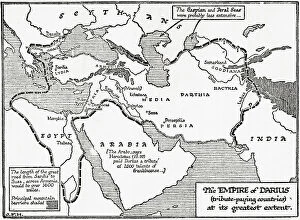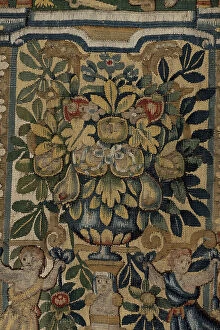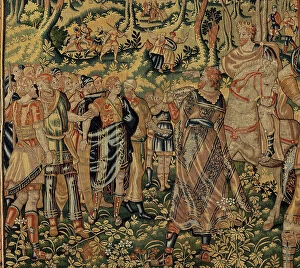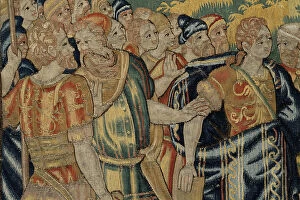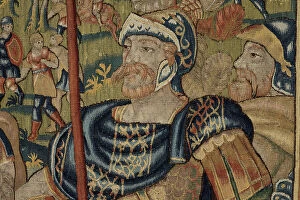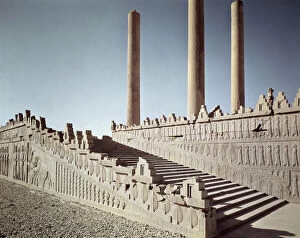Achaemenian Period Collection
The Achaemenian period, also known as the Persian Empire, was a significant era in ancient history
For sale as Licensed Images
Choose your image, Select your licence and Download the media
The Achaemenian period, also known as the Persian Empire, was a significant era in ancient history. It was during this time that Cyrus II The Great rose to power and established one of the largest empires the world had ever seen. The tapestry depicting his story from around 1590 provides us with a glimpse into his remarkable life. Cyrus II The Great was a visionary leader who united various tribes and conquered neighboring lands, creating an empire that stretched from Asia Minor to India. His military prowess and diplomatic skills were unparalleled, allowing him to rule over diverse cultures and peoples. The tapestry showcases key moments from Cyrus' life, highlighting his triumphs and achievements. We see him leading his army into battle, displaying strategic brilliance on the battlefield. His charisma is evident as he interacts with his subjects, earning their loyalty and respect. One particular detail captured in stone relief depicts Xerxes I, who succeeded Cyrus as king. This artwork portrays Xerxes accompanied by two attendants, symbolizing the grandeur of the Achaemenian court. Through these artistic representations, we gain insight into the opulence of the Achaemenian period. Intricate tapestries adorned palaces while stunning reliefs decorated monumental structures like the Apadana (Audience Hall). These artworks served not only as decorative elements but also as propaganda tools to showcase imperial power. The Achaemenians left behind an enduring legacy of administrative efficiency and cultural exchange. They promoted religious tolerance within their vast empire while encouraging trade along well-established routes such as the Silk Road.


